
The Last Chapter of the Hugh Harman Story. When animator, director, producer Hugh Harman passed away November 25,1982, he was living pretty close to the poverty line. He had previously borrowed money over the last decade or more from Roy O. Disney and Friz Freleng (and even frequent small amounts from Mark Kausler and others) to survive. He could no longer afford to own a car and lived in a ramschackle rooming house near the corner of Selma and Cahuenga. He was receiving a monthly allowance from his cartoonist brother Fred (the creator of Red Ryder) that stopped when Fred died in January 1982. Some friends put Harman up in a house in Chatsworth.
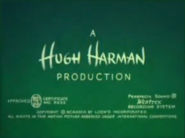 I had also loaned Harman a small amount (that I knew would never be paid back) when I met with him at a Bob Clampett presentation in Pasadena just after he had married a Greek woman named Kahtia in 1980. Once she got citizenship and found that Harman had no “hidden” money, she disappeared and Harman engaged the District Attorney and even the FBI to try and locate her but they never did.
I had also loaned Harman a small amount (that I knew would never be paid back) when I met with him at a Bob Clampett presentation in Pasadena just after he had married a Greek woman named Kahtia in 1980. Once she got citizenship and found that Harman had no “hidden” money, she disappeared and Harman engaged the District Attorney and even the FBI to try and locate her but they never did.
Of course, Harman had dreams including one day producing a feature entitled The Good Book (inspired by the “rules” in his 1939 short Peace on Earth) and a live action/animation feature about a boy from outer space. These projects were supposedly going to be financed by a conman named Joe Andari who was trying to talk Harman into purchasing a big studio in Nevada with Harman as the studio head. It later turned out Andari expected Harman to bankroll all the proposed projects while Harman had been under the assumption that Andari was going to supply the financing.
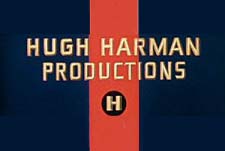 Harman even hoped for the development of a cable television special called The Harman-Ising Story that would have included public domain copies of Warner Brothers Bosko and Merry Melodies shorts and some MGM cartoons that Harman thought he had the rights to use. The script would have starred comedian Milton Berle in all the live action roles from ticket taker to animator. In the script there would have been a short section of new animation of Bosko on an animation desk engaging in “snappy patter” with Berle.
Harman even hoped for the development of a cable television special called The Harman-Ising Story that would have included public domain copies of Warner Brothers Bosko and Merry Melodies shorts and some MGM cartoons that Harman thought he had the rights to use. The script would have starred comedian Milton Berle in all the live action roles from ticket taker to animator. In the script there would have been a short section of new animation of Bosko on an animation desk engaging in “snappy patter” with Berle.
Part of the sadness about Harman’s last years was that he tried never to let his old friends know just how badly off he was (sometimes having breakfast at the Old World restaurant in Beverly Hills) and was too vain to go “backwards” by taking a job as a consultant at an animation studio but wanted to produce new films that he felt were meaningful. He considered many of his earlier shorts to be merely “frivolous wastes of time”.
Music and Animation. Chuck Jones, interviewed in Business Screen magazine (Aug/Sept 1982) said, “Animation – and films in general – probably have more to do with music than with other forms of graphic art. This is because animation is a series of visual impacts. Music is a series of auditory impacts. You hear notes in relation to other notes, and the same is true of film. It has a time factor. If you didn’t retain the visual image, the accents wouldn’t work.”
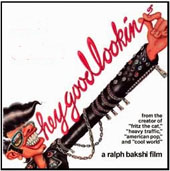 Bakshi Speaks. Animator and director Ralph Bakshi in the November 1982 issue of American Premiere magazine talking about the recent release of his animated feature Hey Good Lookin’ said, “I want to try to get the same excitement in live action that I was able to create in some of my animated pictures. The challenge of doing something new is basically what I’m looking for and hopefully people will be interested to see what I can do in live action.
Bakshi Speaks. Animator and director Ralph Bakshi in the November 1982 issue of American Premiere magazine talking about the recent release of his animated feature Hey Good Lookin’ said, “I want to try to get the same excitement in live action that I was able to create in some of my animated pictures. The challenge of doing something new is basically what I’m looking for and hopefully people will be interested to see what I can do in live action.
“I want to be sure that whatever I do brings something different to live action and I want to bring to live action what I’ve learned in animation – a sense of different timing, of visuals, of cutting patterns. Just as I think I’ve developed an unusual way of treating subject matter. I want to emphasize the importance of casting. In collecting the faces that have appeared as animated characters that I’ve developed, I think, I have a special way of looking at people, of finding different types. You don’t do things hoping they will work. You do them because you have to.”
Cartoons That Never Were 1984. In 1984, Filmation announced that it would be doing an animated feature film entitled “The Son of Sleeping Beauty”. Taft Entertainment said it was exploring a live action series based on Hanna-Barbera’s Jonny Quest. Before Michael Eisner came on board at Disney, the company had seriously considered purchasing Taft Entertainment to make the company less attractive to Saul Steinberg. Marvel Productions announced a joint production with France’s Antenne-2 and South Korea’s Pan Sang East of a twenty-six half hour (budgeted at five million dollars) series based on Jack London’s White Fang. Marvel was to do the story and layouts with the rest of the work being done by Pan Sang.
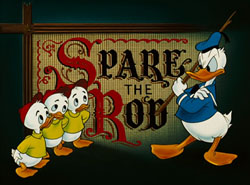 Disney Channel Violence. Dr. Thomas Radecki, chairman of the National Coalition on Television Violence criticized the Disney Channel in 1984. The group counted 55 murders and 57 attempted murders in fifty hours of cartoons and live action programming. The group specifically cited Donald Duck as a violent character with Radecki stating, “I was particularly disturbed by the Donald Duck and his nephews cartoons which promote spanking as the appropriate and only way to discipline children. Three different Donald Duck cartoons put down non-violent attempts to deal with problem children and offered no alternative type of discipline other than corporal punishment”. The Disney Channel responded that it would continue to select programs based on the “preference of our audience”.
Disney Channel Violence. Dr. Thomas Radecki, chairman of the National Coalition on Television Violence criticized the Disney Channel in 1984. The group counted 55 murders and 57 attempted murders in fifty hours of cartoons and live action programming. The group specifically cited Donald Duck as a violent character with Radecki stating, “I was particularly disturbed by the Donald Duck and his nephews cartoons which promote spanking as the appropriate and only way to discipline children. Three different Donald Duck cartoons put down non-violent attempts to deal with problem children and offered no alternative type of discipline other than corporal punishment”. The Disney Channel responded that it would continue to select programs based on the “preference of our audience”.
The UnKindest Cut. The first freelance animation work done by animator Mark Kausler was done in March 1972 for the motion picture The War Between Men and Women starring Jack Lemmon and based on the writings of James Thurber. Bob Dranko directed the animation. Kausler produced fifty-eight feet of animation but thirty-eight of it wound up being cut from the picture and the dialog he animated was spoken off-screen in live action between Lemmon and actress Barbara Harris. All that remained of his efforts was the last scene of the man, woman, the children and family terrier walking off to infinity. After that job, it was starvation time for many months as Mark tried to rustle up another freelance gig. Ah, the life of a freelancer!
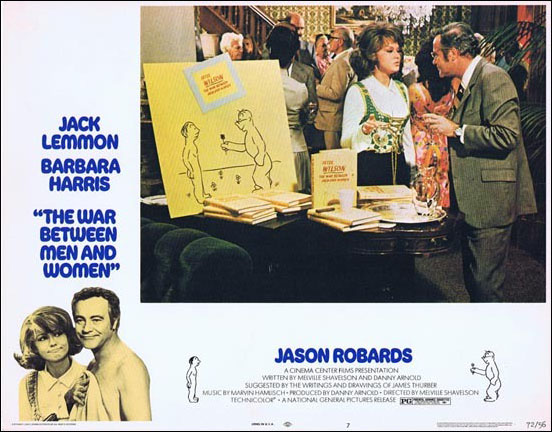


 Jim Korkis is an internationally respected animation historian who in recent years has devoted his attention to the many worlds of Disney. He was a columnist for a variety of animation magazines. With his former writing partner, John Cawley, he authored several animation related books including The Encyclopedia of Cartoon Superstars, How to Create Animation, Cartoon Confidential and Get Animated’s Animation Art Buyer’s Guide. He taught animation classes at the Disney Institute in Florida as well as instructing classes on acting and animation history for Disney Feature Animation: Florida.
Jim Korkis is an internationally respected animation historian who in recent years has devoted his attention to the many worlds of Disney. He was a columnist for a variety of animation magazines. With his former writing partner, John Cawley, he authored several animation related books including The Encyclopedia of Cartoon Superstars, How to Create Animation, Cartoon Confidential and Get Animated’s Animation Art Buyer’s Guide. He taught animation classes at the Disney Institute in Florida as well as instructing classes on acting and animation history for Disney Feature Animation: Florida.




















































“Son of Sleeping Beauty”? After “Journey Back to Oz”, “Pinocchio and the Emperor of the Night” and “Happily Ever After” (a Snow White sequel) — why not?
I’m sure they were on a roll at the time!
And surprisingly Disney Channel do still show films involving “violent deaths ” such as Aladdin (where Gahzeem the Thief was swallowed by the Cave of Wonders), Atlantis and Tarzan (with a record sixth deaths)!
I wonder why Dr Radecki of the National Coalition on Television Violence didn’t targeted Popeye WB’s Looney Toons/Merrie Melodíes and MGM’s Tom and Jerry on being very violent?
I wonder if the Chairperson of Adults Against Funny Cartoons (aka The AAFC) from Tiny Toon Adventures was inspired by Dr Radecki’s NCTV?
Maybe since the cartoons like Popeye etc. were from another time and teenagers and their parents (as opposed to just kids) watched them. No thanks to Filmation and Scooby Doo that cartoons have become known as strictly for kids. Saw “Hairspray” last night — anyone wanna compare Thomas Radecki, and the fictious queen bees Velma and teenaged daughter Amber Von Tussle, and Penny’s mom Prudy, as they made the attempts to stop rock and roll and integraton. Dr.Radecki was of that generational mind-set LOL.
John Water’s original “Hairspray” from 1988 was my favorite for that reason!
“Before Michael Eisner came on board at Disney, the company had seriously considered purchasing Taft Entertainment to make the company less attractive to Saul Steinberg.”
Why was Steinberg interested in Taft Entertainment?
It was to make Disney less attractive for Steinberg to try to take it over.
I see how the business works!
A White Fang animated series would later be made by CINAR, Anabase, and TF1.
Actually, “The Son of Sleeping Beauty” was part of a series of features that Filmation was planning to produce in the mid-80s, some of which also were sequels to Disney classics (albeit based on public domain stories). Seems that Disney wanted to sue Filmation in order to prevent them making these films but with no success; however only two of these were finally made before Filmation shut down, “Pinocchio and the Emperor of the Night” and “Snow White: Happily Ever After” (originally to be called “Snow White and the Seven Dwarfelles). Others of these planned but unproduced features include “The Challenge of Cinderella”, “Bambi: Prince of the Forest”, “The Continuing Adventures of the Jungle Book” and “Alice Returns to Wonderland”. Lou Scheimer tells more about this project in his autobiographic book “Creating the Filmation Generation”.
Gee, that’s tough news to learn about Hugh Harman. I wonder why he and Rudy had a falling out. When the guys were at MGM, I expected those large budgeted cartoons to lead to something, even if they produced a feature-length film with writing or idea assistance from others who might have been curious as to how to use animation, but yes, I know where animation stands when it comes to preferences in the business; it remains the least traveled of all roads, despite even modern ideas as to how to tell an adult story through that medium. Trouble is, Hugh’s own ideas hadn’t advanced since the MGM days–on a side note, I found it interesting that, when it came to producing “WINKY THE WATCHMAN”, Hugh hired, as one of the live action performers, Janet Burstan, one of the last OUR GANG members before the series came to a close. Harman might think his earlier films were garbage, but those should have been stepping stones to something greater. They still are wonderful today, simply because they are theatrical films, with so much alarming detail. Harman could tell the simplest story and keep you pinned to it because of all the animation flourishes…
Then, we move on to Bakshi. I’ve yet to see “HEY, GOOD LOOKIN'”, and I’m anxious to check this one out. Now, there’s a man who went so far the other way, telling *ONLY* adult-oriented stories. I don’t expect Hugh Harman to deal in the same subject matter, although one sometimes wonders how a Harman film of that type might have come out; hey, it’s nice to imagine.
And me? I’m still waiting for “CIRCUS DAZE” and the other HAPPY HARMONIES to show themselves, someday. I still hope to someday hear a near master quality print of “LI’L OL’ BOSKO AND THE PIRATES” and “BOSKO AND THE CANNIBALS”, just to hear those soundtracks without splice or muddy drop-offs, but as for Harman ever bringing back Bosko? That was a truly questionable choice, unless Bosko were designed to look like his LOONEY TUNES design (and, no, I’m not talking about “THE TALK-INK KID”; I’m referring more to films like “BOSKO IN PERSON”, and I think that might have been the Bosko that Hugh was wanting to unearth. C’mon, folks. The character was of its time. He had to be redesigned for his guest appearance in “TINY TOON ADVENTURES”, and I guess that he will never again see rebirth.
Didn’t Hugh Harman’s children and grandchildren help him in any way? His obituary said he had a son and two grandsons.
Speaking of Thurber, who did the animation in the TV series “My World and Welcome to It”?
What happened to Hugh Harman was heartbreaking. 🙁 I had no idea.
According to Jerry on the commentary for “You Ought to be in Pictures” that was included in both DVD and Blu-Ray Looney Tunes series, it was DFE.
The Thurber animation in “My World and Welcome To It” was done by DePatie-Freleng (the “Pink Panther” studio.)
Harman was a guest at Cinecon in 1980 and that woman was never not by his side. He wouldn’t even sign anything unless she signed it also. We all knew what the score was, but didn’t dare say anything, as he seemed to be happy. I had no idea it had ended that badly. What a damn shame.
Sounds almost like the relationship between Erin Fleming and Groucho Marx (without the marriage).
Wonder if Marvel would’ve credited the Pang Seng group in their end credits? I doubt it anyway, given the circumstances they barely went beyond crediting overseas studios under “Produced in Association with”.
An animated White Fang cartoons series did come out, though it was through another company altogether.
https://en.wikipedia.org/wiki/The_Legend_of_White_Fang
It did led to some edits seen in the cartoons shown on “Donald Duck Presents”. I recall “Spare The Rod” practically got cut in half due to its use of natives that popped into the cartoon.
I don’t suppose the film did too well anyway. Not that I would use that to justify cutting out that much animation that was done but I do feel for Mark there.